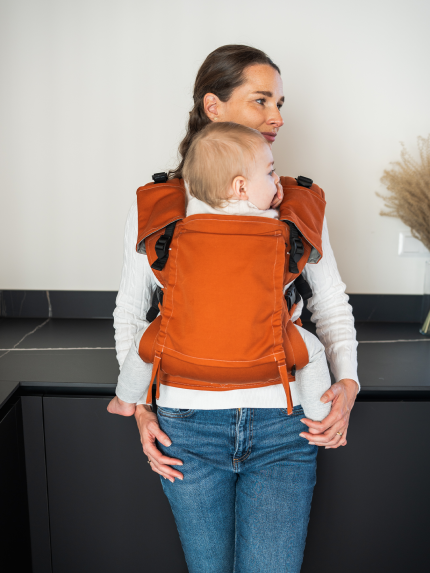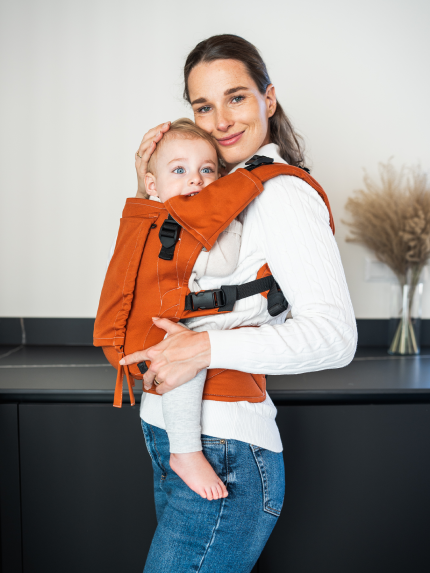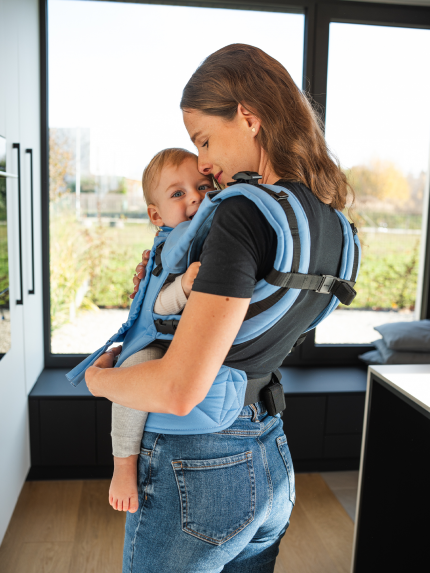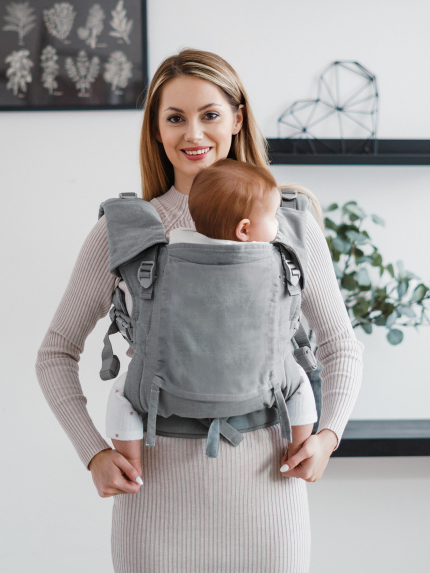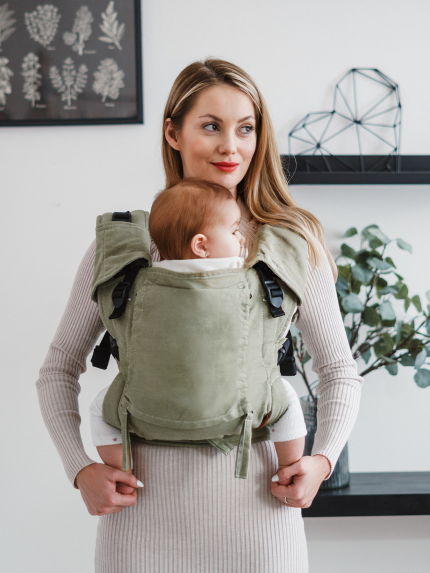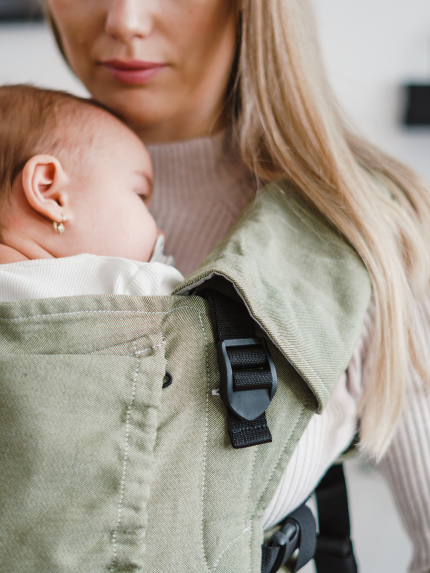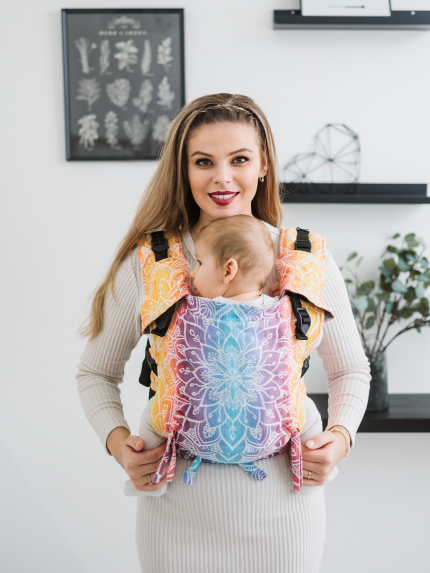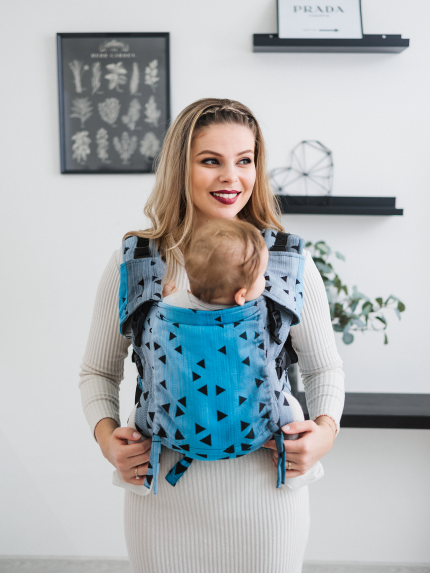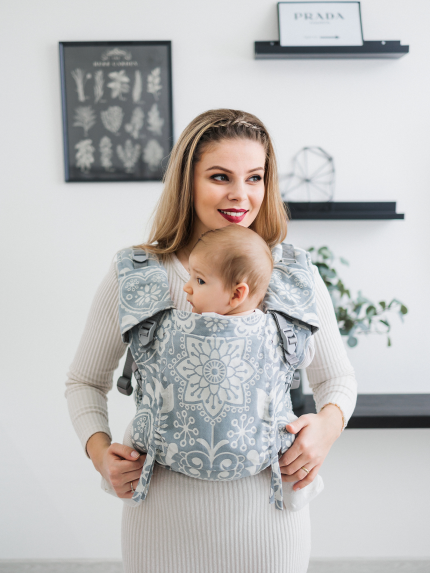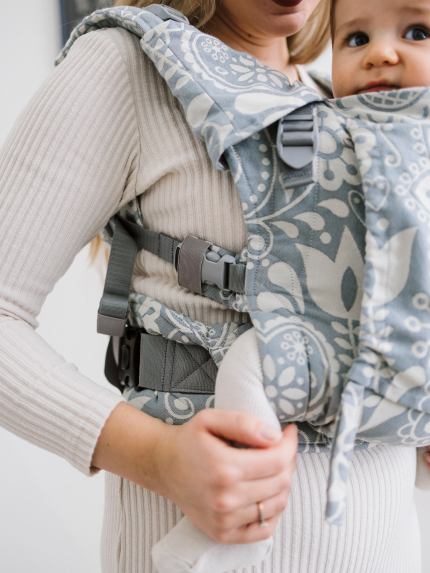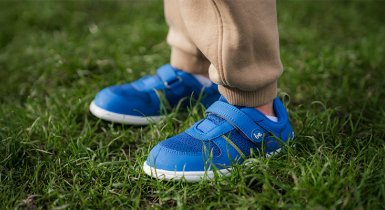Starting solid foods

The first and most important source of nutrients for the baby is milk. It provides everything your baby needs for proper growth and development. Your baby should still be allowed to nurse/be bottle-fed on demand, milk should still be the primary source of nutrition. Solids during the first year are only meant to complement breastmilk/formula. By introducing solids, you allow your baby to explore the world of new textures and tastes, in form of different kinds of veggies, meat or fruit. Solids during the first year are usually prepared in a form of purees.
Content
- When to start?
- How to start?
- Solids and breastfed baby
- Introducing solids – how?
- Start with one kind at a time
- Two ingredients at a time
- Three ingredients – add more veggies or protein
- Recipes for babies
- Plant-based solids
- Solids with meat
- First real food and a breastfed baby
When to start?
When is the right time to start with solids? If you are exclusively breastfeeding, you do not need to hurry, you can wait until your baby is 6 months old. If your baby is bottle-fed, you can start when your baby is 4 months old.
How to start?
When you want your baby to eat solid food, a good soft baby spoon is a must. First, start with smooth purees, introduce one kind of veggie at a time, preferably local and seasonal such as carrots, broccoli or potatoes. Feed your baby solids for lunch before feeding him/her milk. Later, you can prepare meals consisting of more ingredients, you can mix more kinds of vegetable together or even low-fat meat or egg yolks with veggies.
Solids and breastfed baby
If your baby is refusing to eat solids, it is so easy to get frustrated. Don’t be sad! It is just a phase and it, too, shall pass. Your baby has just started with real food, everything is new and he/she has to get used to it. Even one or two spoons eaten is amazing! All babies are different. Some will refuse to eat anything but milk, some will be greats eater from the very beginning. Be patient and supportive, your baby is exploring the world of new tastes and textures.
Introducing solids – how?
The best way for a transition from milk to solids is to follow a three-step rule. This way you allow your baby and his/her digestion to get used to real food and you can watch for any possible allergic reaction. So let’s get started!
Start with one kind at a time
Always start with one kind of vegetable. You can start with a carrot, for example. Wash it, peel it and steam it. Then make a puree. Before breastfeeding your baby for lunch, or giving him/her a bottle, try to give him a carrot puree. Use a soft spoon for babies and feed him/her a few spoonfuls. Then breastfeed/bottle-feed your baby as usual. Try to increase the amount of puree day by day. You want to skip the milk for lunch completely eventually, it will take several days or more, just be patient. Use only one kind of veggies at a time so your baby can get used to its taste and if any allergic reaction shall occur, you will notice and know the cause.
Two ingredients at a time
If your baby eats one-ingredient meal well, try to add one more kind of veggie. Let’s say, you have started with an aforementioned carrot. Try to add cooked/steamed broccoli or a potato. Feed your baby this two-ingredient meal for several days. Watch closely for an allergic reaction. If anything out of ordinary occurs, you can blame “the new” addition to your real food family.
Three ingredients – add more veggies or protein
If everything goes well, you can add the third ingredient to your baby meal – meat or egg yolk. Or another kind of veggie, if you prefer to raise your baby on a plant-based diet. So, your baby’s meal will consist of two kinds of veggies, meat or egg yolk, or three kinds of veggies.
Recipes for babies
How to cook for your baby? You can try store-bought baby purees or you can, preferably, cook them on your own. You will know exactly what is in your baby’s meal and you can avoid preservatives or other chemical substances, which can be occasionally found in store-bought baby food. If you insist on buying purees for your baby, read the labels well and do not be ashamed for being picky J.
If you want to prepare your own baby purees, you can cook them in advance and sterilize them for later. If you do not have space to store your purees, you can cook them fresh every day. It takes almost zero time and it is so so easy.
Plant-based solids
Wash the veggies well in running water, peel them and steam them. (Steaming is the best method of how to prepare veggies for babies as they stay full of vitamins). If you do not have the steamer or you do not want to do it this way for whatever reason, you can boil the veggies in a pot with water (bottled water for babies, ideally). Mash the cooked veggies with a fork or blend them, it is up to your choice and taste of your baby. Some like their solids with small chunks, some prefer smooth purees. Use a soft spoon for babies and have a towel ready. Eating solids can get messy J
Solids with meat
If you want to introduce meat to your baby, you better start with low-fat meat (not red), such as poultry (chicken or turkey) or rabbit. Wash the piece of meat properly, cut into small cubes and cook in a pot with water. When it is soft and tender, rinse it and sautée it on a little olive oil, then mash it or blend it. You can start introducing meat when your baby is seven or eight months old. You do not need to use any spices or salt when cooking meat, it not good for babies’ sensitive digestive system and kidneys. Once a week, use hard-boiled egg yolk instead of meat. Do not use an egg white as it is full of allergens and it is not recommended for babies under the age of one.
First real food and a breastfed baby
As we have said before, feed your baby solids for lunch. Babies should be still breastfed (formula-fed) for the rest of the day, or on-demand. When your baby eats solids for lunch instead of drinking milk, you can substitute dinners as well. The best dinner for babies is a porridge, ideally a bowl of gluten-free rice or corn porridge. Yum! Not only are they tasty and rich, but they are easily digested so they will not give your baby a tummy ache. You can find a plethora of different porridges on the market, just read the labels and choose the right one suitable for your baby (age, allergies, diet). You can choose from milk porridges or lactose-free porridges. However, you will have to add milk of your own choice, whether it is your expressed breast milk or formula you normally use. Do not stop breastfeeding / bottle-feeding your baby in order to “starve him/her” to eat more of solids. milk is the most important source of nutrients for babies, up to the age of 1, so they have plenty of time to eat like we, adults, do. It takes time, so take it slow, be patient and enjoy this exciting journey with your baby.

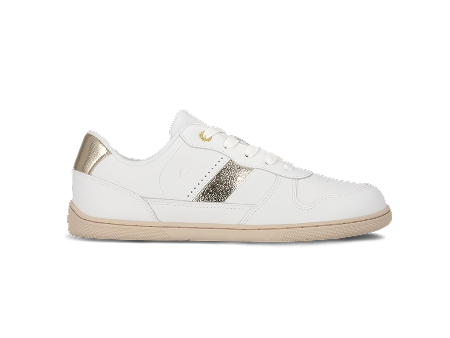





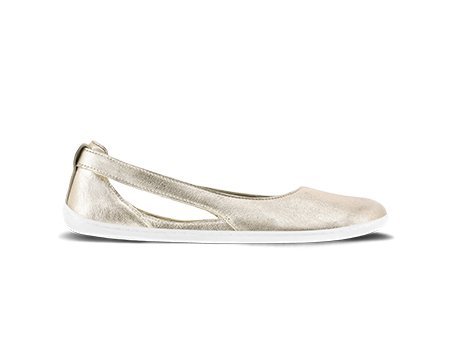
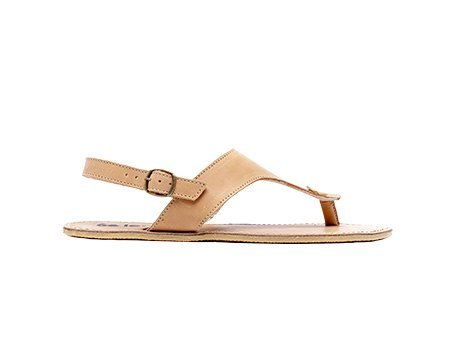




















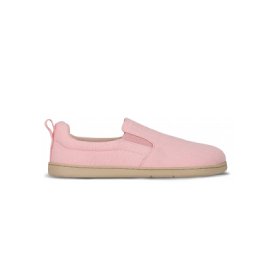




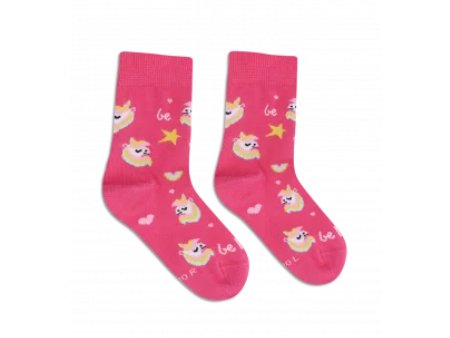

 Be Lenka
Be Lenka
